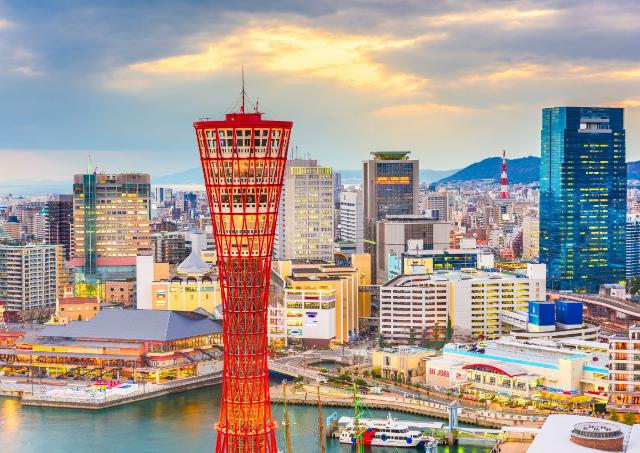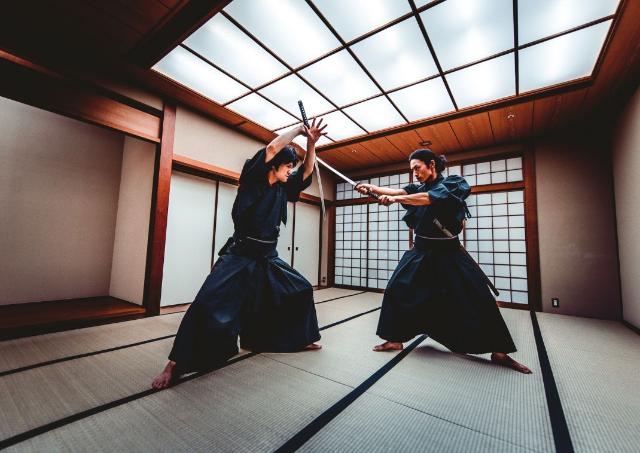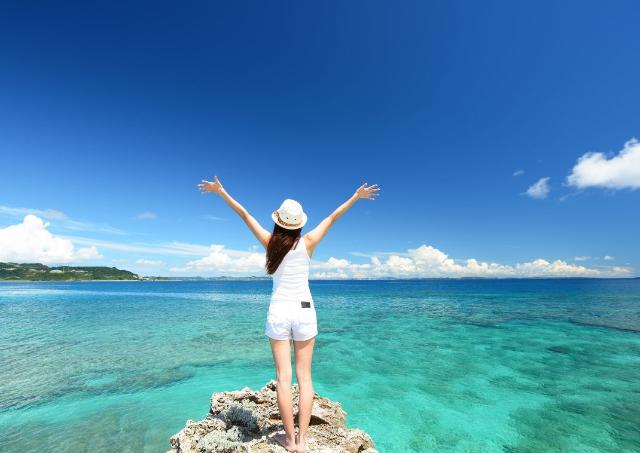Japan’s Art Island: How to Make the Most of Naoshima

Japanspecialist
Budapest, Hungary
Naoshima (直島), also nicknamed "Art Island," is a tiny island with a lot to offer. Located in the heart of the Seto Inland Sea, halfway between Osaka and Hiroshima, it has established itself as a world-renowned landmark for modern and contemporary art.
You can explore Naoshima and find not only several famous pieces of art displayed throughout the urban space, but also a wide selection of contemporary and classical art museums.
When to Visit Naoshima and How to Get There
To decide when to visit Naoshima Island, it’s important to note that June to September is typically 20°C and above (and can reach 30°C or higher), whereas December to March is often below 10°C. Spring and autumn tend to stay in the teens, so are generally the most pleasant times to visit the island and its art museums. If you’re visiting in winter or summer, remember to bring ample layers or sun screen!
As for how to get there, it is best to visit when you are also visiting somewhere like Osaka or Hiroshima, as the trip all the way from Tokyo can take quite long. From Shin-Osaka Station, you can take the bullet train to Okayama Station, followed by a local line to Uno Station, and from there take the ferry to Naoshima Port. Overall, the trip will take around 3 – 3.5 hours.
If you do want to visit from Tokyo, you will have to fly to Takamatsu Airport, then take the bus to Takamatsu Port, and finally the ferry to Naoshima Island. Or, take the shinkansen until Shin-Osaka (which will add 2.5 hours to your journey), and then follow the same route as above.
Given the difficulties of getting to the island, and the fact that there is so much to see, it is best to stay a night on Naoshima Island itself to make the most of the trip! When you’re there, you can use the local public bus, rental bicycles, or travel on foot. Note that most of the facilities on the island are closed on Mondays.
What to See on Naoshima Island
To make your visit to this picturesque island, which blends nature, architecture, and art, we've selected the must-see places for you. Naoshima is part of the Seto Archipelago, a group of islands that has become a contemporary art destination, attracting half a million visitors annually for its tourist and artistic appeal.
As you can see on our map, every corner of this island lives up to its nickname, as it is filled with places to enjoy art from north to south.
The Iconic Yellow Pumpkin
When it comes to Naoshima Island, the first thing that comes to mind for many is Yayoi Kusama’s sculpture, Yellow Pumpkin. Kusama has created a number of different pumpkin art pieces that are dotted around Japan. In fact, there is even a second, Red Pumpkin on Naoshima, right by the ferry terminal.
But the Yellow Pumpkin, standing out on the western shore of the island, is the most well-known of Naoshima's art installations. It was created for an art exhibition in 1994, and stands 2 meters high and 2.5 meters wide. It was originally only intended for temporary exhibition, but it worked with Naoshima Island’s concept of “Symbiosis of Nature, Architecture and Art”, so it was kept on permanently.
You can find the iconic pumpkin sculpture towards the southern end of Naoshima, near the Benesse House Museum.
Benesse House Museum and Benesse Art Site
The Benesse House Museum and Benesse Art Site was the very first structure to be built on Naoshima in 1992 in its journey to becoming an art island. It was designed to double as both a hotel and museum, and in 1994 held the outdoor “Out of Bounds” exhibition where Yayoi Kusama’s Yellow Pumpkin was first shown.
Overlooking the Seto Inland Sea, the museum was designed by celebrated Japanese architect Tadao Ando, and features contemporary artworks by the likes of Hiroshi Sugimoto, Gerhard Richter, and David Hockney, to name a few. The hotel guest rooms feature unique works of art themselves, with those in the Oval boasting beautiful balcony views out onto the sea.
Lee Ufan Museum
Just a few minutes’ walk from the Benesse House Museum is the Lee Ufan Museum, which opened in 2010.
This museum was created as a collaboration between architect Tadao Ando and contemporary painter and sculptor Lee Ufan. Both artists are known for their minimalism and often use materials like concrete and stone, so their styles work together to create an impression of both stillness and dynamism at the same time.
The building was created to be semi-underground to not interfere with the skyline and view of the Seto Inland Sea, and inside you’ll find paintings and sculptures by Lee Ufan spanning from the 1970s to present day. This is a relatively small museum that only requires around 30 minutes to visit slowly, but it is a good place to unwind and allow yourself some quiet contemplation.
Chichu Art Museum
Not far from the Lee Ufan Museum and Benesse House Museum is the architectural marvel of Chichu Art Museum.
Also designed by Tadao Ando, the museum opened in 2004 with the idea of “Rethinking the Relationship Between Nature and People”. This museum was also built mostly underground to avoid interrupting the natural scenery. Despite that, it lets in a lot of natural light, which interacts with the artworks in different ways throughout the day and even through the seasons.
The museum features just a few rooms, with each including artworks by one artist, and designed specifically for hosting the art pieces which are placed there – thus, the museum itself turns into a piece of art. From Claude Monet, Walter De Maria, and James Turrell, and requires around 1–1.5 hours to complete. One simply cannot leave Naoshima without having seen and felt the Monet painting Water Lilies, or the light installation Open Sky by James Turrell at the Chichu Art Museum.
I Love Yu (Naoshima Bath)
If you want to feel even closer to the artwork, an interesting installation near the Naoshima ferry terminal is I Love Yu (I♥︎湯). This is a public bathhouse which in itself is an art exhibit by Shinro Ohtake. And no, “Yu” is not a typo! “Yu” in Japanese means hot water, and is associated with public baths!
There are elements of Ohtake’s work both inside and outside the bathhouse, with specially designed mosaics, wall murals, and bathtubs in his “scrapbook” style. It was created with the idea of promoting cultural exchanges between international visitors and Japanese local residents, and is open from 1pm–9pm daily, but closed on Mondays.
Other Art Island Highlights
Although Naoshima Island is relatively small, it is truly packed with interesting contemporary art installations and exhibits to explore. Some of the other places to visit on the island include the Art House Project. In the Art House Project, artists occupy different empty houses in the village, and turn the spaces into contemporary art.
Moreover, you can find the Ando Museum and the Hiroshi Sugimoto Gallery and Go’o Shrine, but you will also find a number of other art pieces here and there.
The newest addition to Naoshima's contemporary art is the Benesse House Museum Valley Gallery: opened in 2022, this space hosts Yayoi Kusama's Narcissus Garden, an art installation featuring a sea of shiny, silver balls. This is why we recommend staying a night or two, as it is difficult to get everything done in one day!
If that’s not enough for you, you can also visit the two neighbouring art islands of Teshima and Inujima, which each take under an hour to reach by ferry from Naoshima.
Another one of the art islands, Teshima is home to the Teshima Art Museum: an architectural marvel by Ryue Nishizawa. The Teshima Art Museum is a testament to concrete defying gravity, and provides a comprehensive audiovisual experience.
Explore Eastern Japan Further from Naoshima
There are a few different hotel options when staying on Naoshima Island, such as the four Benesse House accommodations. But once you have made it to Naoshima, it’s a good excuse to explore further.
If you explore further south of Naoshima on the coast in the Setouchi region, you will find some hidden like the seaside and mountain town of Onomichi. At Onomichi, you can also rent a bike and cross over little islands all the way to Shikoku on the Seto Inland Sea's famous bicycle route, the Shimanami Kaido. Continue your eastern adventures with the town’s beautiful scenery and friendly cats, and allow yourself to unwind in these calmer areas.
Plan your art trip with us
Get in touch with one of our travel consultants, they are ready to help you create the trip you always dreamed of.
Online Consultation
You may also be interested in these articles
The name Kobe may forever be associated primarily with basketball and beef, but the real Kobe is a city that goes far beyond these superficial ties. Before becoming […]
Who doesn’t love samurais? These centuries-old Japanese warriors carry a little bit of everything for everyone: from their impressive skills and rigid principles to […]
Filled with picture-perfect beaches, historic places, and yummy food, Okinawa is a must when touring Japan. Pack your bathing suit and let us convince you to spare […]



